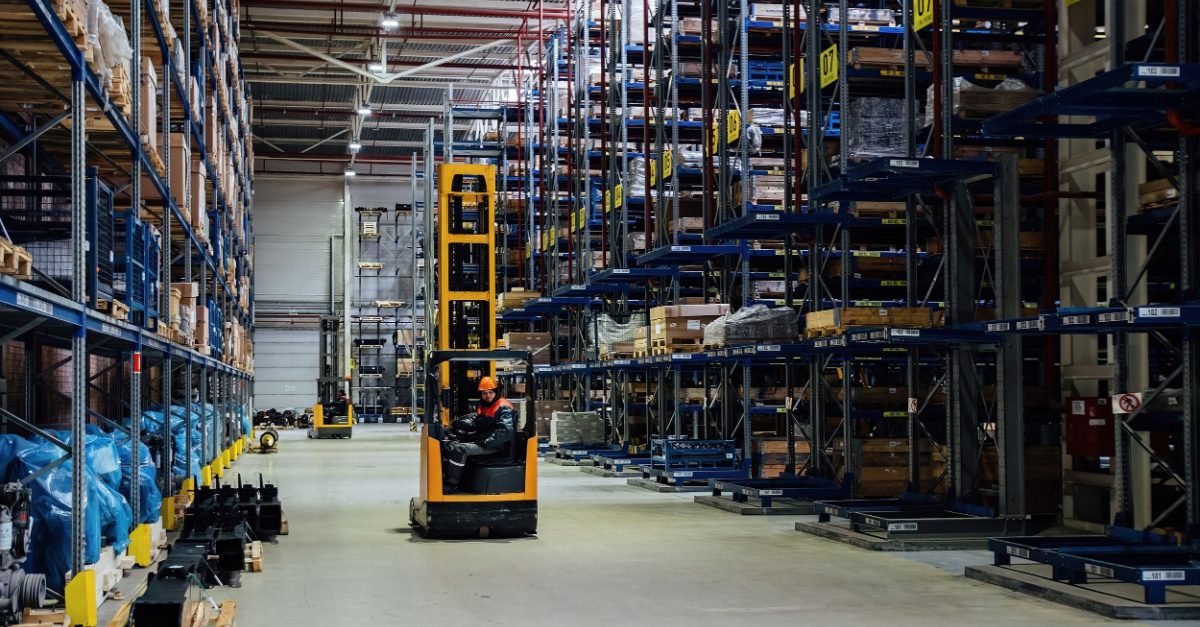
Sustainable E-commerce Warehousing: Going Green For Success
Sustainable e-commerce warehousing lines up the e-commerce industry with eco-friendly practices. As online shopping continues to rise, the environmental impact of warehousing operations becomes a critical consideration.
What is a Sustainable E-commerce Warehouse?
A sustainable e-commerce warehouse is a space where storage and distribution are managed. This minimises environmental impact by managing the distribution and storage of goods for online stores. Sustainable warehouse implements environment-friendly practices and technologies into practice. The objective is to maintain a balance between economic viability and social and environmental responsibility.
Importance of Sustainable E-commerce Warehouse
Sustainability in the warehouse plays an important role. Warehouses release huge amounts of garbage, require a lot of energy, and release greenhouse gases into the atmosphere. This is where the concept of a Sustainable e-commerce warehouse comes in. Here is why adopting sustainability in warehouses is important
Environmental Impact
Sustainable warehouses are important for minimising the impact on the environment. Traditional warehouses require large amounts of energy for lighting and cooling systems. However, sustainable warehouses do not require a huge amount of energy to perform the same tasks.
Customer Loyalty and Brand Image
Sustainable warehouses are important for preserving consumer loyalty and brand image. As customers are becoming more conscious regarding the environment, they value companies that share the same ideology. Therefore, this ultimately helps to push up the brand image.
Cost Reduction
Sustainable Warehouse also serves an important role in reducing costs. By implementing sustainability, you enhance the bottom line and contribute to environmental protection at the same time. Sustainability measures like energy efficiency, waste reduction, and optimised transportation lead to cost savings in the long run.
Going Green: Key Strategies For Sustainable Warehousing
Going green means to adopt an eco-friendly process to reduce the impact of warehouse operations on the environment. Some of the key strategies that warehouses can adopt to become more sustainable are
Energy Efficiency
Energy efficiency is a crucial aspect of sustainable warehousing. It has a direct effect on operating expenses and the warehouse environment. By using energy-efficient practices, you can minimise greenhouse gas emissions, cut energy costs, and preserve resources. Warehouses should adopt the below-listed methods:
- Transition to renewable energy sources
- Replace traditional lighting with LEDs
- Optimise HVAC systems and maintenance
- Promote employee engagement and awareness
Green Building Materials
Green building materials play an important role in sustainable warehousing by minimising environmental impact. It is achieved by using environmentally friendly materials and sustainable building techniques. This creates an environmentally friendly future and reduces carbon footprint by implementing sustainability. Some examples of green building materials that can be used in warehouses are:
- Recycled content materials
- Rapidly renewable materials
- Locally sourced materials
- Low emitting materials
Water Conservation
Water conservation plays a crucial role in sustainable warehousing. Traditional warehouses consume huge amounts of water for various purposes. Hence, Implementing water conservation measures reduces the environmental impact. Some key strategies for water conservation are:
- Install water-efficient fixtures
- Implement rainwater harvesting
- Adopt water-efficient landscaping
- Monitor water usage
Efficient and Sustainable Transportation
Efficient and sustainable transportation is important for sustainable warehousing. Warehouses generate a significant amount of transportation-related emissions, from the movement of goods and materials. Some of the key strategies for efficient and sustainable transportation are:
- Optimise transportation routes
- Reduce fuel consumption
- Transition to cleaner vehicles
Sustainable Packaging and Proper Waste Management
Sustainable packaging and proper waste management are two key strategies for sustainable warehousing. Simplified, sustainable packaging involves using materials that can be recycled or composted. At the same time, Proper waste management involves recycling, composting, and responsibly disposing of waste. Both of them can help reduce the amount of waste that goes into landfills, and create products from recycled materials. Some examples of sustainable packaging and proper waste management practices that warehouses can implement:
- Use recycled content packaging
- minimise packaging
- Choose compostable packaging
- Recycle and compost
Benefits of Sustainable E-commerce Warehousing
Sustainable e-commerce warehousing brings many benefits to the environment and our communities. According to the experts from CDR Engineers Australia, it helps reduce pollution and waste. Warehouses that follow sustainable practices use energy more efficiently and often rely on renewable sources. They also focused on reducing trash by producing more recyclable products with biodegradable materials.
Cost Savings
Cost savings are a significant benefit of implementing sustainable e-commerce warehousing. It can be expensive during the installation. However, it is compensated by long-term benefits. Here are some ways in which sustainability in the warehouse leads to cost savings.
- Energy efficiency
- Waste reduction
- Operational efficiency
- Transportation optimisation
Positive Brand Image
Positive Brand image is one of the benefits of sustainable warehousing. Consumers are making purchasing decisions based on a company’s social and environmental responsibility. They are looking for brands that share the value and contribute to a sustainable future. Here’s how sustainable e-commerce warehousing can positively impact a company’s brand image:
- Increased brand Trust and Credibility
- Positive Media Coverage
- Improved Employee Engagement
- Compliance with Future Regulation
Regulatory Compliance
Sticking with regulatory compliance is a crucial benefit of sustainable e-commerce warehousing. By following rules and regulations, the warehouse can operate ethically and responsibly. Here are some ways in which regulator compliance can serve as benefits:
- Environmental Regulation
- Product packaging regulation
- Occupational Safety and Health Compliance
- Ethical Sourcing and Labour Standards
Reduces Impact On the Planet
Reducing the impact is another benefit of sustainable e-commerce warehousing. These sustainable warehouses adopt environmentally friendly practices. This contributes to an eco-conscious and responsible supply chain. Here are some ways that help to minimise the impact on the planet:
- Carbon emission Reduction
- Waste minimisation
- Biodiversity preservation
- Water conservation
Risk Mitigation
Risk mitigation is another crucial benefit of sustainable e-commerce warehousing. Sustainable practices help businesses address various risks and challenges more effectively. Some ways sustainable practice helps to mitigate risk in e-commerce warehouses are
- Supply chain Resilience
- Regulatory Compliance
- Brand Reputation
- Long-term Viability

Challenges And Solutions in Adopting Green Warehousing
The challenges arise together with the implementation of sustainable warehousing. As the benefits of sustainable warehousing are undeniable, challenges cannot be neglected. Here are some of the key challenges and their possible solutions:
Initial Implementation Costs
Challenges – One of the prime obstacles in implementing sustainable warehouses is the significant costs associated with implementation.
Solution: Explore more government incentives, grants, or subsidies designed to support businesses that adopt sustainability policies this way the space could be effectively utilised.
Employee Training
Challenge – Employee lack of interest in Employee training programs could result in decreased organisation effectiveness.
Solution: Implement interactive and engaging training methods, to capture and maintain employee interest and create a productive work environment
Overcoming Resistance to Change
Challenge – Employees may feel uncertain or anxious about the unknown aspects of the change, fearing potential negative impacts on their roles or job security.
Solution: Communicate the reasons for the change, its expected outcomes, and the positive impact
Wrapping Up
In conclusion, a sustainable e-commerce warehouse effectively manages the storage and distribution of items for online shopping. The key strategies for achieving sustainable warehousing encompass various factors. These factors contribute to environmental preservation and yield various benefits. The sustainability journey comprises various challenges and hurdles that oppose progressive growth in the making of a greener supply chain. However, those challenges can be addressed through effective management and the use of energy-efficient methods. Government incentives, training programs, and effective communication strategies can also help achieve success. Furthermore, A greener supply chain will help reduce the carbon footprint and contribute to the ongoing green earth motive.
The Institute of Supply Chain Management (IoSCM) is the first international institute to represent the interests of the wider supply chain. We aim to improve the industry by setting standards and promoting best practices through high-quality training and qualifications. The Sustain Chain from IoSCM is helping individuals and businesses to create a sustainable future for our industry and environment. Find out more and access a wide range of expert resources by visiting The Sustain Chain today.
FAQs
What are the Environmental Issues in Warehouses?
Indoor pollution in warehouses can include carbon monoxide, hydrocarbons, and nitrogen oxides. Also, in warehouses located in areas with high humidity and poorly ventilated areas, toxic mould is an issue. Similarly, water supplies also produce large amounts of wastewater and solid waste that are released into the oceans and contaminate ecosystems.
What is the Waste in the Warehouse Environment?
Warehouses generate a huge amount of waste both directly and indirectly. These wastes can be in various forms, impacting the environment, resources, and overall efficiency. Some of the wastes commonly produced by warehouses are:
- Damaged packaging
- Non-recyclable materials
- Hazardous materials
- Food waste
- Waste from transportation
What is an Efficient Warehouse Strategy?
An efficient warehouse strategy is a strategy that optimises all aspects of warehouse operations. It involves various elements working in flow to achieve maximum efficiency and productivity. Some of the components of an efficient warehouse strategy are:
- Layout and design
- Inventory Management
- Order fulfilment and picking
- Warehousing technology
What is the Biggest Safety Issue in a Warehouse?
The biggest safety issue in a warehouse depends on several factors. Some of the common safety issues consistently rank high across various warehouse environments:
- Forklift accidents
- Slips, Trips, and falls
- Material Handling
- Falling objects

